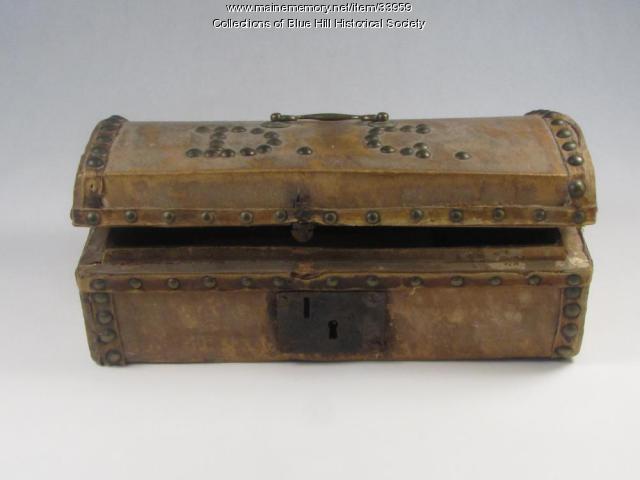Keywords: Seafarers
Item 33959
Capt. Daniel Clough's Sea Box, Blue Hill, ca. 1820
Contributed by: Cordell Snow through Blue Hill Historical Society Date: circa 1820 Location: Blue Hill Media: Wood, metal
Item 15182
Alexander Andrew, April 18, 1865
Contributed by: City of Brewer Date: 1865-04-18 Location: Brewer Media: Photographic print
Exhibit
The Life and Legacy of the George Tate Family
Captain George Tate, mast agent for the King of England from 1751 to the Revolutionary War, and his descendants helped shape the development of Portland (first known as Falmouth) through activities such as commerce, shipping, and real estate.
Exhibit
The rocky coastline of Cape Elizabeth has sent many vessels to their watery graves.
Site Page
View collections, facts, and contact information for this Contributing Partner.
Site Page
Swan's Island: Six miles east of ordinary - III. Boom, bustle, bust: The Steamboat Years to WWII
"III. Boom, bustle, bust: The Steamboat Years to WWII Fishing and shipbuilding led the state of Maine into its “Golden Economic Age” in the 1850s, as…"
Lesson Plan
Primary Sources: The Maine Shipyard
Grade Level: 9-12
Content Area: Social Studies
This lesson plan will give students a close-up look at historical operations behind Maine's famed shipbuilding and shipping industries. Students will examine primary sources including letters, bills of lading, images, and objects, and draw informed hypotheses about the evolution of the seafaring industry and its impact on Maine’s communities over time.
Lesson Plan
Becoming Maine: The District of Maine's Coastal Economy
Grade Level: 3-5
Content Area: Social Studies
This lesson plan will introduce students to the maritime economy of Maine prior to statehood and to the Coasting Law that impacted the separation debate. Students will examine primary documents, take part in an activity that will put the Coasting Law in the context of late 18th century – early 19th century New England, and learn about how the Embargo Act of 1807 affected Maine in the decades leading to statehood.













